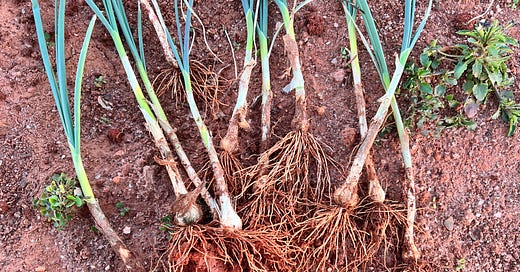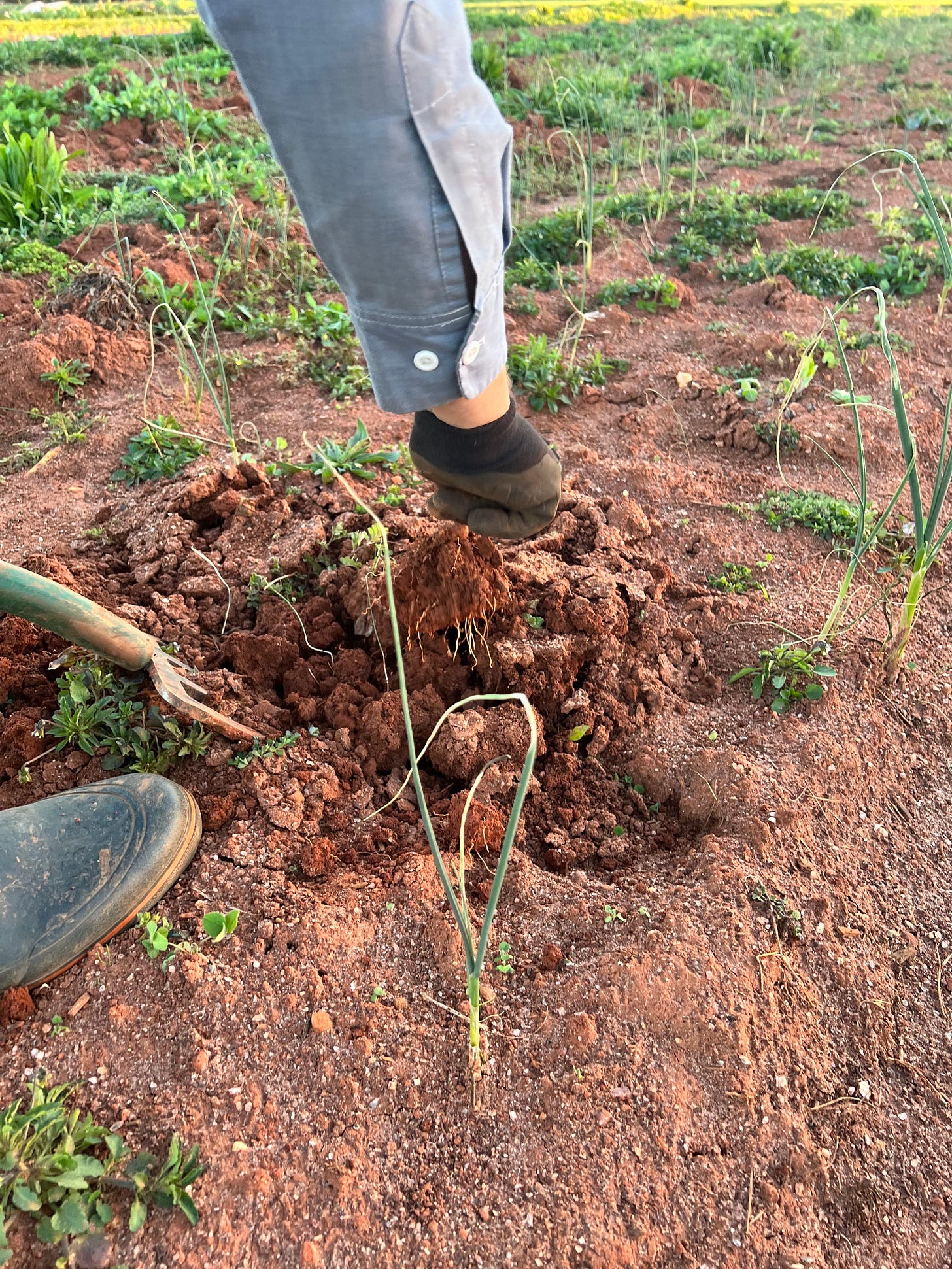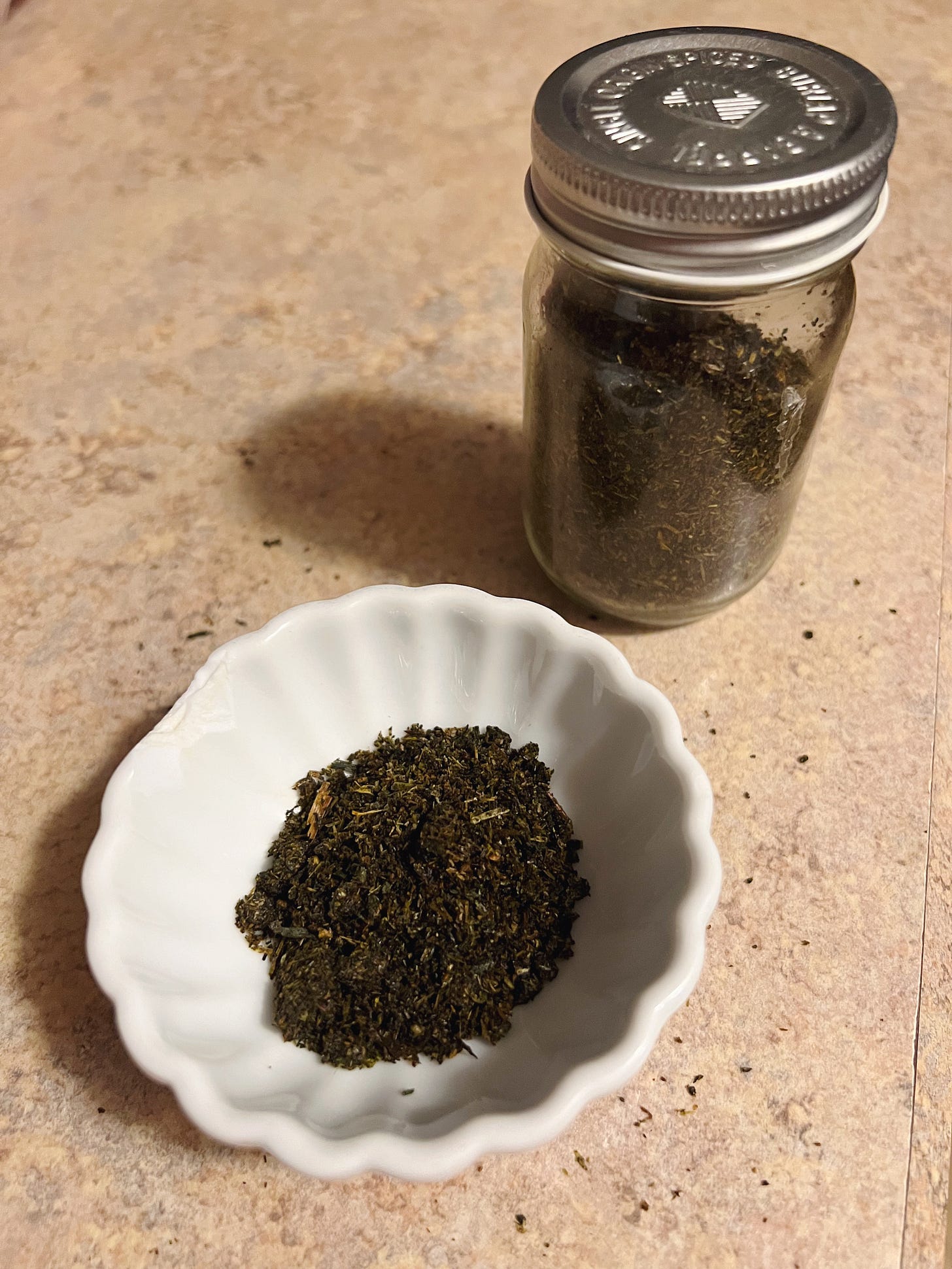I grew up in a suburb of Central Florida with little connection to the outdoors. I did the suburban kid thing— played sports, hung out with kids in the cul-de-sac of Pond Apple Court, and watched grown men obsess over the color and cut of their St. Augustine grass. My stepfather walked up and down our driveway with a pump sprayer filled with Round-Up, spraying any errant weed that dared sprout. A pox on any dandelion that disturbed his kingdom of order!
This kind of disconnection, this imperialist need to control the natural world was normal in the land of Mickey Mouse and middle-class life. Of course I spent time outside like a regular kid, but there was no model that encouraged me to see value in those weeds creeping through the sidewalk cracks.
Plant identification? Never heard of it.
In Jodi Rhoden’s newsletter this week she wrote, “A plant becomes a weed only by virtue of being unwelcome.” In Oviedo, Florida, everything was weeds unless a human hand put it there.
Fast forward to meeting my husband, the one who picks dandelions and purslane from forgotten patches of land. The one who spots daylily buds, or “ditch lilies” as his grandfather called them, and turns them into pickles. I had never met anyone like him at the time–– a person so connected to a particular landscape and the growth cycles of plants he could spot chicken of the woods from the roadside, and point you to a patch of wild violets or an elderberry bush in bloom. He’ll pull dandelion petals, sprinkle them over a plate, and call it confetti.
Jamie grew up with a grandmother who waited for wild greens to show themselves each spring: poke, creasy greens, and branch lettuce–– blessed nutrients she eagerly consumed after a long winter of living out of the pantry. His upbringing taught him to see abundance in the natural world. “Food is everywhere,” is his common refrain. These rural ways were not precious. It was just how people ate. In tandem with nature, it’s how they survived. Indigenous cultures maintain this knowledge too, centuries-long wisdom of being in touch with the Earth and its offerings.
Here on the farm, we make use of what’s around us because we value it. What a gift to take something ubiquitous, some might say invasive, and transform it to something worthwhile. Props to my husband for showing me the way.
Wild alliums, also known as field garlic or yard onions, grow in abundance just about everywhere. You’ve probably seen their spindly leaves sprouting across your lawn. Perhaps you view them as a nuisance. Uproot them and make use! These innocuous plants, pungent with flavor, can be turned into a simple pantry item with little effort and a smidge of patience. The neatest thing about making use of something so common, is that even though it’s everywhere, you can’t buy it anywhere.
Wild Allium Powder
The recipe below is more of a method rather than a precise calculation of amounts. We use a dehydrator to dry out the alliums, but a low oven would do the trick. Use your allium powder like any onion powder. Add to vinaigrettes, chilis, and soups. Use it to season your protein, or add flair to your salad. We sprinkle it on a parbaked quiche shell before adding vegetables and savory custard.
The beauty of this method is that it’s not limited to random onions growing in your yard. You can use it with scallions you buy at the grocery store, or with the green garlic tops and spring onions you find at the farmers market. This is a way to use every bit of your allium.
1. Harvest your alliums. Find a patch of yard onions, and use a trowel or shovel to remove them by the root bulb. Do it after a light rain for easy extraction. Shake any excess dirt off the bulbs. Alternatively, if you don’t feel like digging, you can lo-fi snip the green tops with a pair of scissors and use them as scallions.
2. Clean the alliums. Under the kitchen faucet, rinse the root bulbs of any remaining dirt. Peel the papery layer from the root end. It should leave the wild allium looking shiny white and brand new.
3. Dehydrate the alliums. You have two choices.
For Burnt Allium powder, roast the whole plant in a 400 degree oven until it takes on a good bit of char, 10-20 minutes depending upon your oven and the volume of your harvest. Don’t incinerate the plant, ok? Charring the plant will mellow the pungency of the flavor and add umami notes.
For Green Allium powder, skip the oven char and go straight into the dehydrator.
With your dehydrator on high, let your alliums roll for about 8 hours. We put them into the dehydrator at the end of the day, and let them go overnight. For the oven method, place the alliums on a baking sheet and into a 200 degree oven. Check them after 45 minutes. You’re looking for the whole plant to be crisp and dry– this is key for making a powder and not a paste. If the plant needs more time, continue checking in 15 minute intervals until it reaches the correct texture.
4. Process into powder. Once the alliums have dried to a crisp texture, buzz them to a powder in a blender, food processor, or coffee bean grinder. Store in a jar. You just made a new spice!
ON THE FARM: The entrance of Spring is felt deeply here, where so much of what we do is dependent upon the season, the weather. The vernal equinox landed on Monday with its 12 hours of daylight, and it felt like someone flipped a switch. Both the farm and bakery side of our operation begin to ramp up this time of year, with markets on the horizon. We are engaged with the work before the work, the planning and planting and preparing for the season ahead In addition, we’re hosting our first and largest event of the season this weekend—The Old North Farm Fish Pickin’, so the day-to-day has also been filled with logistics and emails, farm clean-up and the fetching of supplies.
WHAT’S GROWING: The winter/spring whiplash keeps it interesting this time of year. With temperatures swinging from 26 degrees on Monday to 77 degrees yesterday, the plants are cautious. Do they grow, do they not grow? Meanwhile, Jamie is in and out of the field pulling row cover to protect the plants from frost, then uncovering them, and covering them again. It’s a dance that gets old real quick. The tension of the season lies in the work that needs to get done and the work the weather allows one to do.
Inside the tunnels, sugar snap peas climb the trellis and fingerling potatoes are verdant and cozy under an extra layer of cover. Little gem lettuces grow in the field and in tunnels, along with salad mixes, spring carrots, onions, radishes, beets, broccoli, and cauliflower.
WHAT WE’RE EATING: It’s been pretty basic around here. As long as there’s Little Gem lettuce in the field, we’re eating salads. Sometimes we throw an egg on it, a can of tuna, or decadent crumbles of blue cheese from the cheese shop.
Jamie made a savory oatmeal the other morning that knocked it out of the park. Oats with dried shiitakes, pork sausage, and herbs. An over-easy egg to finish and hot damn! After a failed attempt at lunch the other day, we were left to scramble for something to go with our very basic salad. Jamie whipped up sweet patatas bravas, a play on the classic tapas dish, where he sauteed diced sweet potatoes and onions in a skillet, and tossed them with his own version of salsa brava made of mayo, Aleppo chili, lime juice, and whole grain mustard. Whew!
OF NOTE:
I love Ada Limon, and this On Being was a beautiful listen.
Meet the Godmother of Southern Seeds.
What is climate change meant not doom—but abundance? Rebecca Solnit for the Washington Post.
This Oscar-nominated film about walruses and the effects of climate change captivated me. I gasped audibly at the first magnificent sight of the walruses. Directed by Evgenia Arbugaeva and Maxim Arbugaev. It’s short, only 25 minutes.






Naturally, a suburbanite myself, I just spent Saturday weeding the yard. 🤦🏼♀️ Another magical newsletter, Keia. ❤️